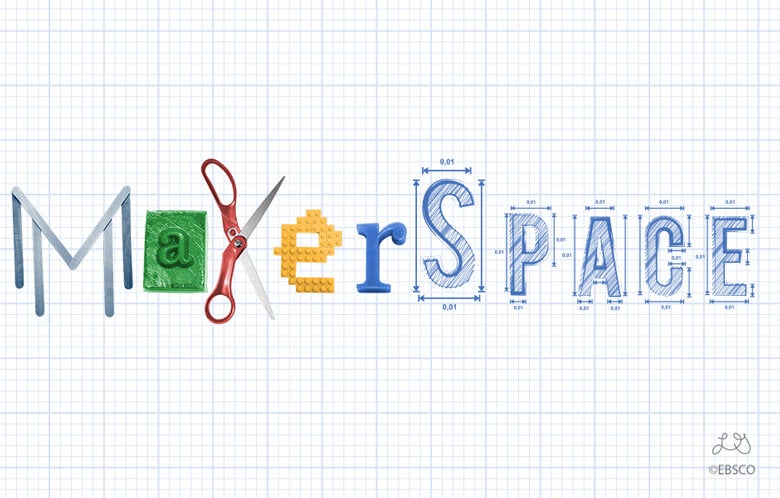A makerspace, sometimes called a hackerspace or fablab, refers to a place for individuals to build, create, experiment and share knowledge and resources. Makerspaces promote hands-on learning, creativity and collaboration, and they are becoming increasingly more popular in K-12 education. Makerspaces provide many learning and development opportunities for students, and the benefits may be even more significant for students with special needs or learning differences. This includes students with physical or learning disabilities as well as students underserved in STEM subjects (Science, Technology, Engineering and Math) and English language learners (ELLs). As educator Patrick Waters writes in Makerspaces for Students With Special Needs, “It just so happens that the type of learning Makerspaces promote best is also the type of learning that students with learning challenges need most.”
Empowering the Learner
A key attribute of the makerspace environment is that it encourages open-ended exploration. According to library media specialist Laura Fleming and special education teacher Billy Krakower, “Students who have unique learning needs thrive in a makerspace because it allows them to express themselves without fear of failure.” In Makerspaces and Equal Access to Learning, Fleming and Krakower explain that allowing students to follow their own creative process can empower them to take control of their learning. They also acknowledge, “Your makerspace might be the only space in your school in which learners have the opportunity to take control of their learning in this way.”
School makerspaces also provide a unique opportunity for teachers to leverage the strengths and interests of students with special needs to increase their engagement and learning. In a March 2017 NSTA report, “Inventing Engages Students with Special Needs in STEM,” authors Joann Blumenfeld and Sheryl Sotelo explore the benefits of learning STEM content in a hands-on way. Their report concludes that providing hands-on opportunities to help students learn STEM content in an engaging way can “motivate and entice even the most reluctant learners.”
It just so happens that the type of learning Makerspaces promote best is also the type of learning that students with learning challenges need most.
It just so happens that the type of learning Makerspaces promote best is also the type of learning that students with learning challenges need most.
Building Life Skills
Makerspaces within schools also support a project-based learning curriculum in which students “gain knowledge and skills by working for an extended period of time to investigate and respond to an authentic, engaging and complex question, problem, or challenge.” In Maker Spaces: What Can They Do for ELL Students?, John Spencer describes the benefits of a project-based curriculum that emphasizes creative thinking to better support ELL education. “ELL students who experience maker spaces,” Spencer asserts, “are better prepared for the kinds of jobs that will require problem-solving and critical thinking.”
Through making, students of varying abilities learn and develop new skills like critical thinking and problem solving, communication and collaboration. Makerspaces provide a catalyst for all students to strengthen these skills, which can lead to success in other areas of school, work and life.
Designing for All
Makerspaces have the potential to provide a wealth of learning opportunities for all students. So how can you ensure your makerspace is accessible to all types of learners? There are a number of great resources out there to help you with the process. To start, a team of researchers at the University of Washington has released a set of guidelines for accessibility and universal design to ensure makerspaces are accessible to as many people as possible. They advocate for “participatory design where individuals from diverse backgrounds bring their unique experiences and perspectives to the design process.”
Another great resource is DIYAbility, whose mission is “Empowering people with and without disabilities to make their world.” This site provides webinars, guides and blog posts highlighting the importance of assistive technology and “making.”
EBSCO also offers resources that can support STEM/STEAM instruction as well as after-school crafting and tinkering. Hobbies & Crafts Reference Center™ contains detailed instructions, creative project ideas and how-to videos for a variety of activities such as knitting, painting, building robots and more. Flipster®, EBSCO’s digital magazine newsstand, provides online access to more than 1,400 magazines including those devoted to jewelry-making, woodworking and photography.
Here are a few best practices to ensure your makerspace contributes to a successful learning experience for all:
- Provide visual cues. “An effective strategy to ensure that your makerspace helps to meet all of your learners’ needs is using visual cues to communicate and give necessary directions. […] Effective visual cues will support your learners in becoming independent thinkers and problem solvers.”
- When considering furniture, choose a variety — “offer different heights, armrests, and surfaces to support a diverse user base.”
- Work tables on wheels makes it easier to reconfigure spaces, but keeping certain equipment and tools in the same location is helpful for visually impaired individuals who rely on mental maps of a room.
- Keep guards on sharp objects so students who use their fingers to “see” won’t accidentally cut themselves.
- Provide as many tools as possible. “Each student with special needs has varying abilities, so it’s important to match tasks to cognitive and physical skills.”
- Include quiet spaces or noise-cancelling headphones to support students with sensory issues or hearing impairments.
Watch the Webinar: "Making the Most out of Makerspaces"
References
Klipper, B. (2014). Making makerspaces work for everyone. Children & Libraries: The Journal of the Association for Library Service to Children, 12(3), 5-6.
